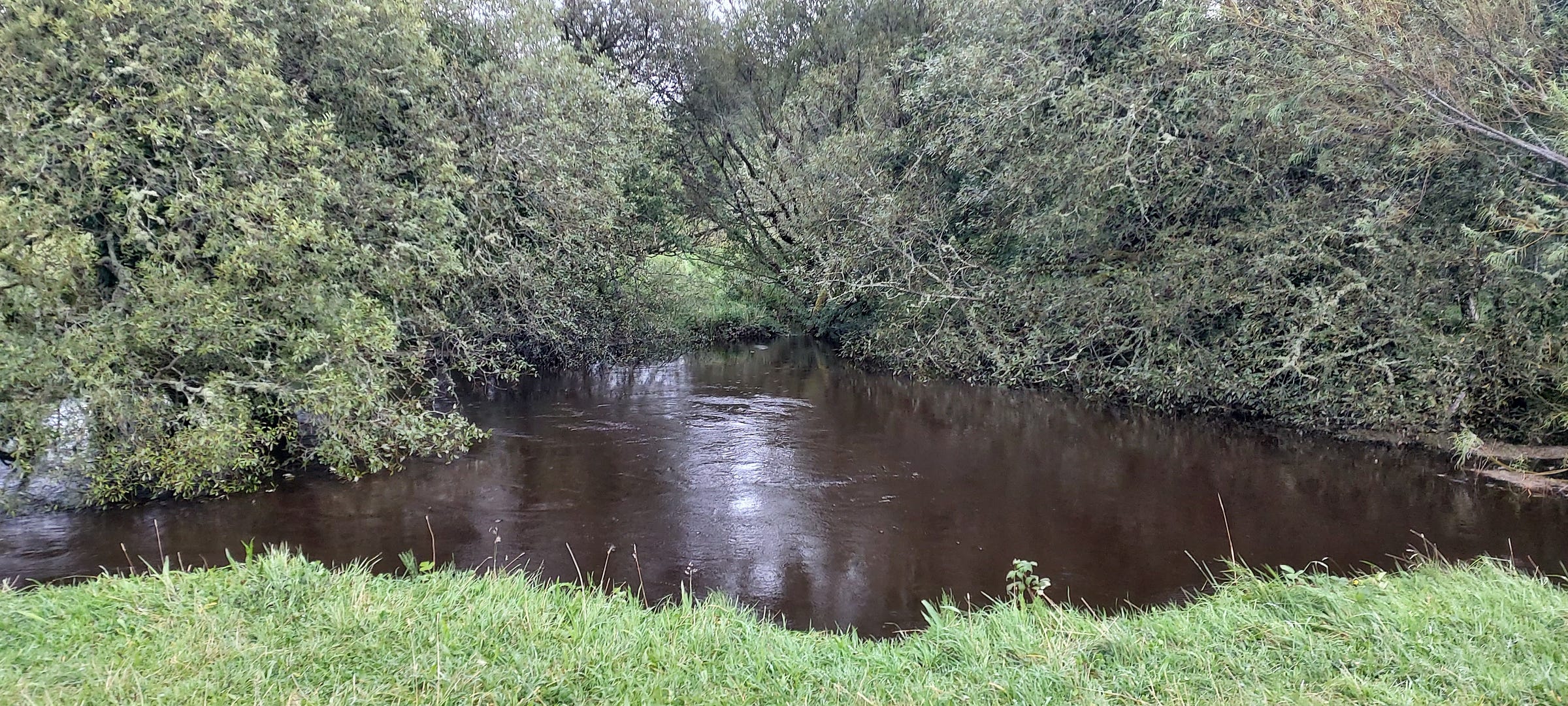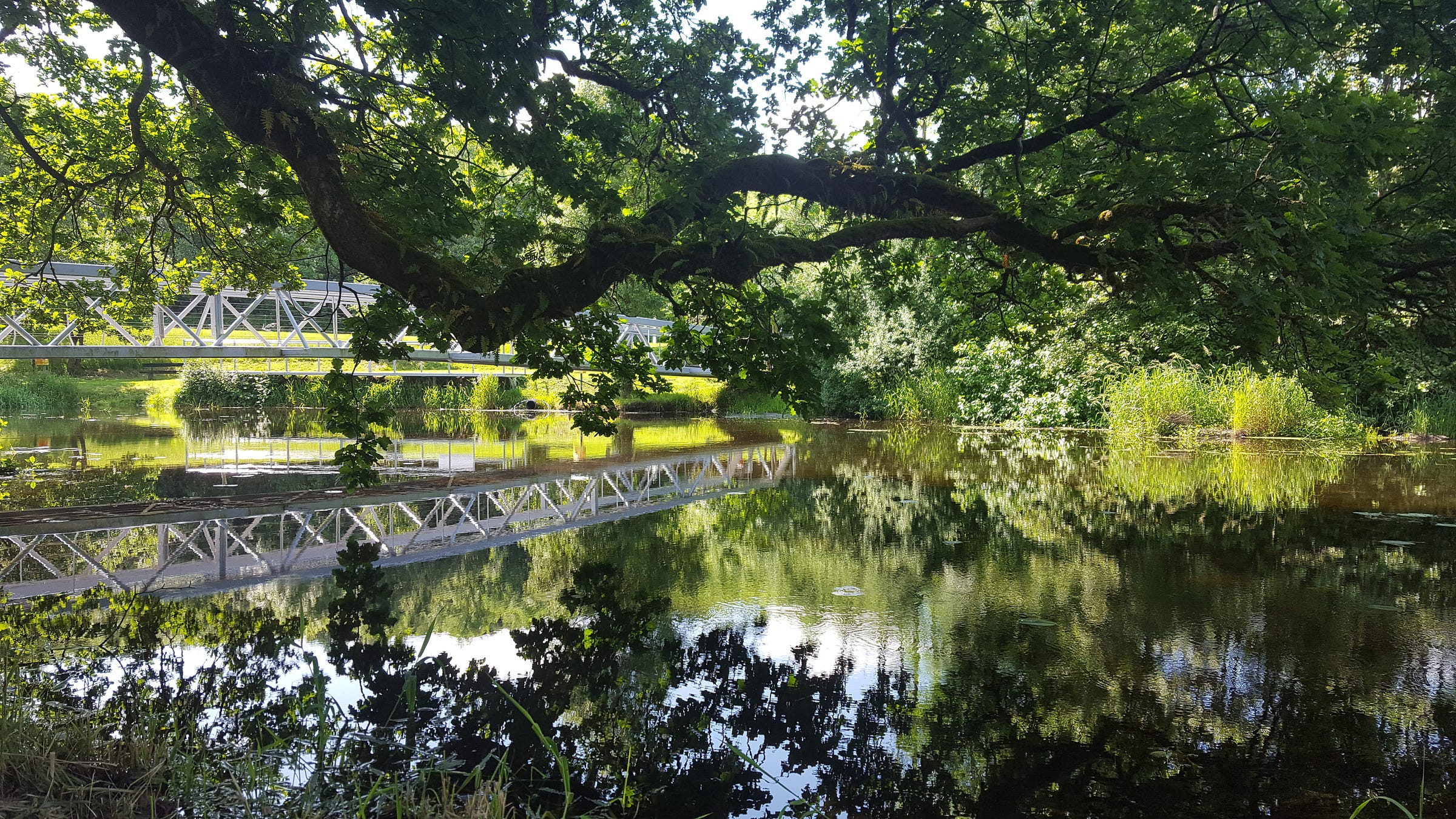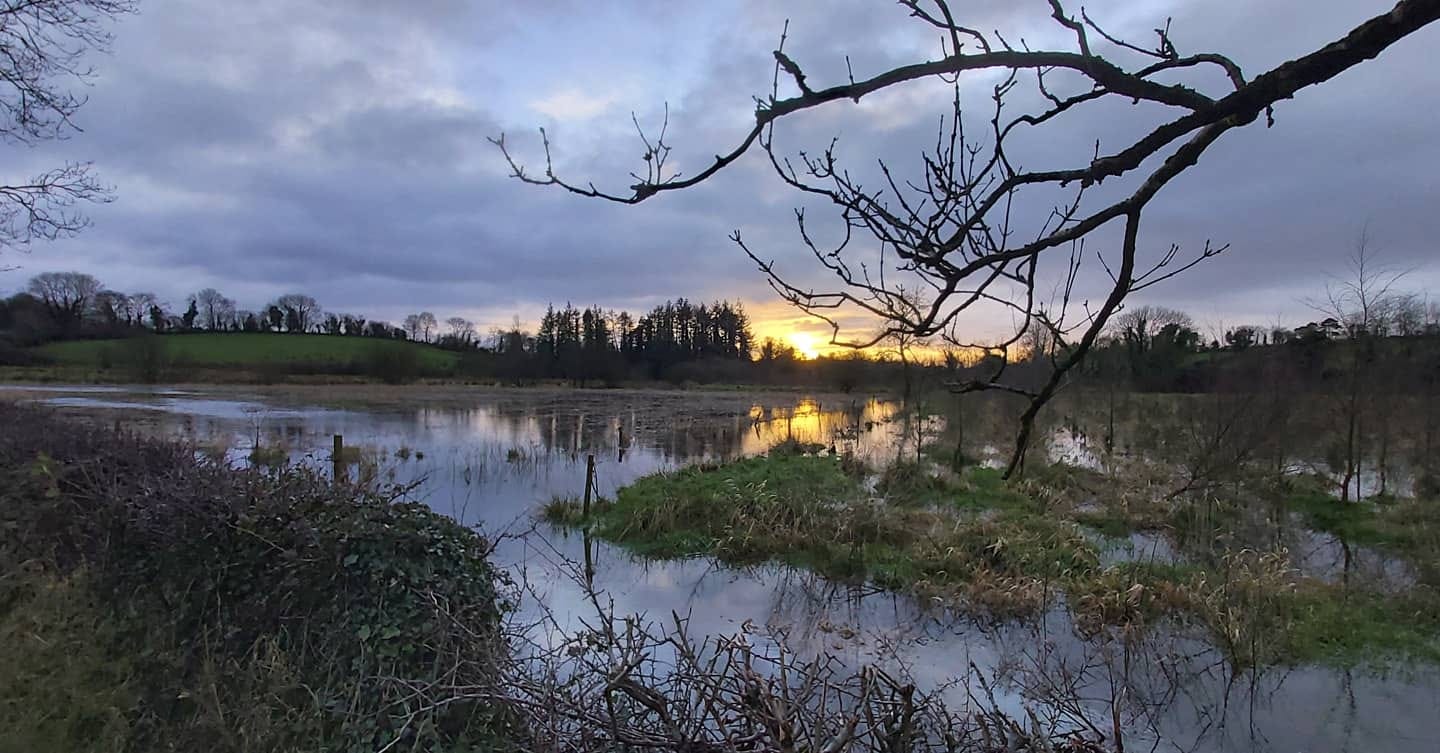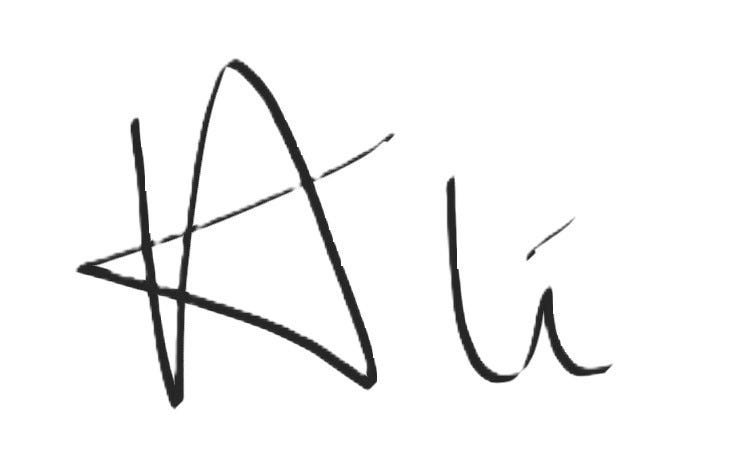Mythical 'Lake-Bursts' of Ireland
the early Irish literary and legendary landscape is awash with flood-lore
In my last post, I described how the willow found me, and how it has become the backdrop to my life. It was inevitable, how could it not be, when they are drawn to watery spaces. Like is attracted to like, and I live in the wettest part of Ireland, where it is said there is a lake for every day of the year.
We have just had two unusually balmy weeks of sunshine; every morning, we awoke to sunshine, and the sky stayed cloud-free until bedtime, and beyond. We’re not used to it. It was so… well, dry. In the days that followed, however, it has not stopped raining.
We get a lot of rain here, and much of Cavan, where I live, is drained from bogland. The soil is dark and damp and heavy. Low-lying areas are often flooded, and it never fails to amaze me how much water the land can hold and filter and drain away. Other parts of the county lie atop karst limestone, which forms a honecomb of cavities and airpockets that fill with water when it rains. We even have our own Burren.
With the gush and flow of excess water so much a feature of the Irish climate throughout the ages, as you can imagine, the early Irish literary and legendary landscape is awash with flood-lore. Under these darkened lowered skies, as the rain falls, I thought I’d share some of those stories with you here.
In the picture above, the River Blackwater, on its journey to join Lough Ramor, and onwards to the River Boyne, has burst its narrow banks. My local landscape is always changing, is constantly in a state of flux, and that is how it is meant to be. Nature has her own coping mechanisms, which may seem harsh and unduly dramatic to us at times, but they have evolved over millennia, and they work. It is only the interactions of humankind which cause irreversible disruption and destruction. Nature, in her stark honesty, is always beautiful.
Céad míle fáilte, a hundred thousand welcomes to H A G! I’m Ali Isaac, and this email comes to you from the intersection of female senescence and Irish landscape, both mythical and natural. My book, Imperfect Bodies, will be published by Héloïse Press in the spring of 2026.
Flooding seems catastrophic to us, but often this is because humans ignore the signs and build their homes and cities on flood plains. In fact, floods are necessary; they are cleansing, they increase fertility of the soil, they are life-giving, they shape the land.
Rivers are female
In Irish myth, rivers are often associated with women, particularly when they flood. One example suggests the River Boyne is named after the Goddess of the Tuatha de Danann, Boan. Her name means 'white cow', and cattle were essential to the survival of early Irish people. The Danann were famous for their herds of fine white cattle.
Boan's story blames the formation of the River Boyne on her desperate search for knowledge. Knowledge was power, and both were historically denied women. The Well of Knowledge was owned by Nechtan, who was Boan's husband, and when he continually denied her access, she decided to take matters into her own hands. The story goes that the Well was so infuriated by her presumption and disobedience, the water rose up and chased her across Ireland all the way to the sea, where she was drowned. The channel it carved in the landscape filled with water and became the River Boyne.
You can listen to me read my own understanding of this story on
’s podcast, Knotwork Myth and Storytelling. Scroll to Episode 9, A Woman’s Quest for Knowledge: Boan’s Tears by Ali Isaac | S6 Ep9.There are several other such stories: the River Shannon, for example, is said to be named after Sionann, granddaughter of Lir, who also went searching for knowledge; the River Bann is associated with Princess Tuag, who was fostered at the Hill of Tara, and was reputed to be so beautiful, that at only fifteen years of age, she was abducted by the sea-God Manannán, and subsequently drowned.
The perishing of women in rivers seems to be a common theme in Irish mythology, worthy of a future newsletter of their own.

Lakes are male
But these are river-bursts, rather than lake-bursts. The lake-burst supposedly had its own genre of tales known in Medieval Ireland as tomhaidhm, and describe how water violently erupts in areas where previously there was none. This may be a reference to the great flood myth of biblical times.
Lough Erne (in Irish, Loch Éirne) lies in Co. Fermanagh, and comprises two lakes, the Upper and Lower Erne, which are connected by the River Erne. Between them nestles the town of Enniskillen.
Lough Erne has two origin stories, both very different, but which concern drownings. In one version, High King of Ireland, Fiacha Labrainne (who himself was named after the River Labrainn, which burst its banks when he was born) went to war against a tribe of people who were known as the Érainn. During the battle, a huge torrent of water burst from the ground, drowning all of his enemies, and leaving in its wake the body of water we know today as Lough Erne. 1
The second story concerns Érne, who was ‘chieftainess of the girls of Cruachan and keeper of [Queen] Medb's combs and caskets’.2 It seems that a warrior named Olc Ai came from the Otherworld via the cave of Oweynaghat to seek revenge after Amorgen the Blackhaired slept with fairy-woman, Findchoem.
He didn’t come to do battle with Amorgen, though, oh no. Instead, he took his fury out on the innocent women of Cruachan. It is said that Olc Ai shook his great beard at the girls and gnashed his teeth so fearfully, that Érne and her women were driven insane with terror and fled. They did not slow down upon reaching the lake, but waded in, desperate to escape their tormentor, and so were all drowned.
The water-horse, or the horse’s water
Lough Ree is the fourth largest lake in Ireland. Located near Athlone, it is fed by the River Shannon. Lough Ree is usually translated as ‘lake of Kings’, but according to legend, it was named after a man named Rí, or Ríbh. He was the son of Mairidh, King of Munster, and he had a brother named Eochaid. When Mairidh took a young wife, Ebhliu, she and Eochaid fell in love, and decided to elope. Ríbh went with them. Halfway through the journey, however, the bothers parted company, and Ríbh continued west.
Ríbh had been loaned a magic horse by Sidhe-King Midher. Midher gave him strict instructions: do not let the horse stop, do not remove his bridle, and do not let him stray. This magical creature carried Ríbh and his luggage for many days without a break, so when it eventually stopped to pee, Ríbh decided it was time for a rest. He unburdened the horse and removed its bridle, whereupon the creature immediately galloped off. Unable to continue his journey, he thought this was as good a place as any to make his home. He built a house, and lived there very happily with his family.
All this time, the mighty stream of urine the magic horse had loosed into the ground remained still, but on the eve of Lughnasadh thirty years later, it inexplicably rose up and gushed forth in a great torrent, washing away Ríbh’s house, and drowning him and all his family. The water spread all across the plain, forming the body of water we now call Lough Ree.
A warrior’s watery grave
Lough Corrib is the second largest lake in Ireland. Located in Co. Galway, it contains over 300 islands, and is considered to be an important conservation site. Corrib is an anglicisation of the Irish Loch Oirbsean.
According to the Leabhar Gabhála (an origin story for the people of Ireland tracing back to the seventh century, and preserved in many prose and poetry versions),3 there were two Manannán's: one was the son of Ler, which means ‘sea’ in Irish, and another known as Orbsen, son of Allot. The Yellow Book of Lecan (a manuscript dating to c. 1400AD), actually claims there were four Manannán's. 4
Orbsen went into battle with Uillin, grandson of Nuada of the Tuatha de Danann. Unfortunately, he was slain, and as his grave was being dug, a wave of water burst forth from the ground and became a great lake, which subsequently was named in his memory. The plain on which the combat took place was named Magh Uillin after the victor. Both warrior's names are still preserved in the landscape today as Moycullen, and Lough Corrib.
Another equine connection
Lough Neagh comes from the Irish Loch nEachach, meaning ‘Eachaidh’s lake’. It is the largest lake on the island of Ireland, and is surrounded by the counties Antrim, Down, Armagh, Tyrone and Derry. Remember when Ríbh helped his brother Eochaidh escape the wrath of their father, King Mhairidh of Munster, when he ran off with his father's new young bride, Ebhliu? Well, Eochaidh suffered a similar fate as his brother. What interests me here is that the name, ‘Eochaidh’, derives from the old Irish word, ech, which means ‘horse’.
When the two brothers parted, Eochaidh continued into Ulster. He also had been lent a magic horse. When the horse stopped and lay down, a well sprang up from the ground and Eochaidh decided to build his home there. He placed a cap over the well, and put a woman in charge of tending it. One day, though, after drawing water, she forgot to replace the cap. The water flooded out, and so Lough Neagh was formed. Eochaid and all his family were drowned, except for one daughter, Liban, who became a mermaid.5
But that's another story for another post.
Here is a short film made for Heritage Week 2020 discussing the lake-burst trope in Irish legend and folklore, particularly in relation to Lough Neigh.
What can we learn from all these stories?
Although there is no evidence to support a global flooding event as described in the Bible, there are enough flood myths around the world to suggest that localised flooding events did occur and were severe enough to devastate communities and form part of their historical lore.
We can possibly look a little deeper than that. It is interesting to note in Irish myth that rivers in spate are associated with women, whereas ‘lake-bursts’ are associated with men, and battles. Where the brothers Ríbh and Eochaidh are concerned there is also the equine link, which leads on to the folklore of the water-horse that lures the unaware onto its back, then drowns its rider in a river, clearly a warning to those who can’t swim to stay away from water.
In the stories of Ríbh and Eochaidh, there is also the disobeying of magical or divine instruction. This seals their fate, and is reminiscent of the stories of Boan and Sionan who defy orders in their search for knowledge that is forbidden to them. The two brothers, though, were not looking for knowledge but seeking out a new home. Perhaps in all these stories, then, it is not what one seeks that leads to punishment, but the disobedience, or the disregard for the guidance of a superior.
Water is unpredictable. It is at once both life-giving, and life-taking. It can be gentle, playful, and also savage and merciless. The salt-sweet rush of water can deliver life from the womb, whilst stealing life from the mother. A woman who cannot bear children is described as barren, like a desert, a land dry and devoid of water, ravaged by the lack of it. An interesting comparison, when in cultures around the world, women are so often considered guardians of water. When in Irish myth, the female guardian of a well can confer kingship upon a man with the giving of a cup of water, and her body. A transaction that often returns a dried-up old hag to youth and beauty. The power of that.
We need water, are made of it, desire it, and fear it. It seems to me that these anxieties play out in the stories and are in constant tension with one another.
I hope you have enjoyed reading this newsletter. I just want to send best wishes to those who celebrate Easter, and to everyone else, tender Spring blessings! Grá,











Happy Easter and thanks for the lovely photographs and informative post!
It’s all so different from the Scottish Lochs, which flow to the sea. Although, there are similar legends.